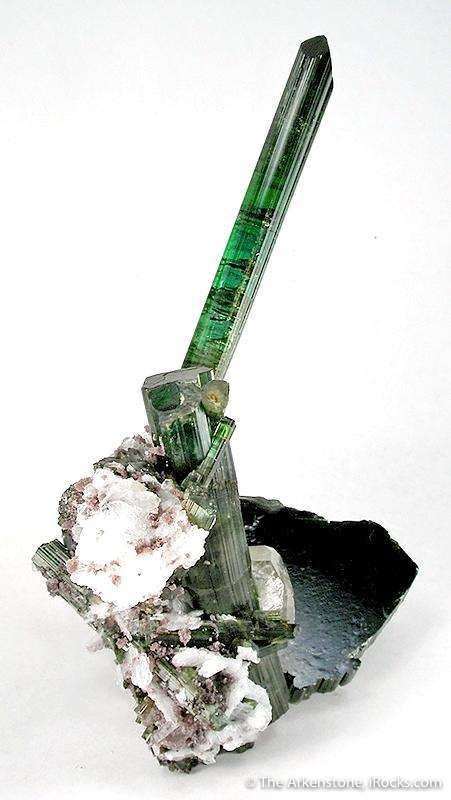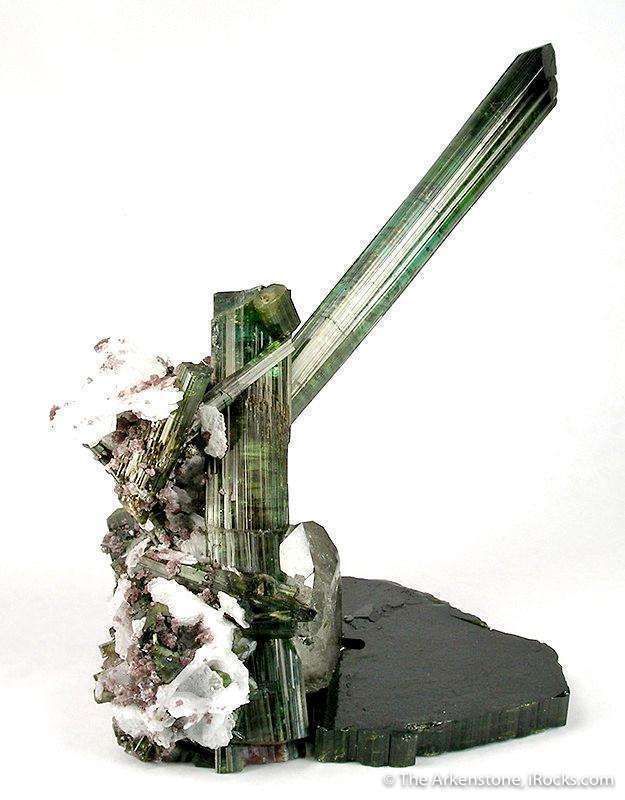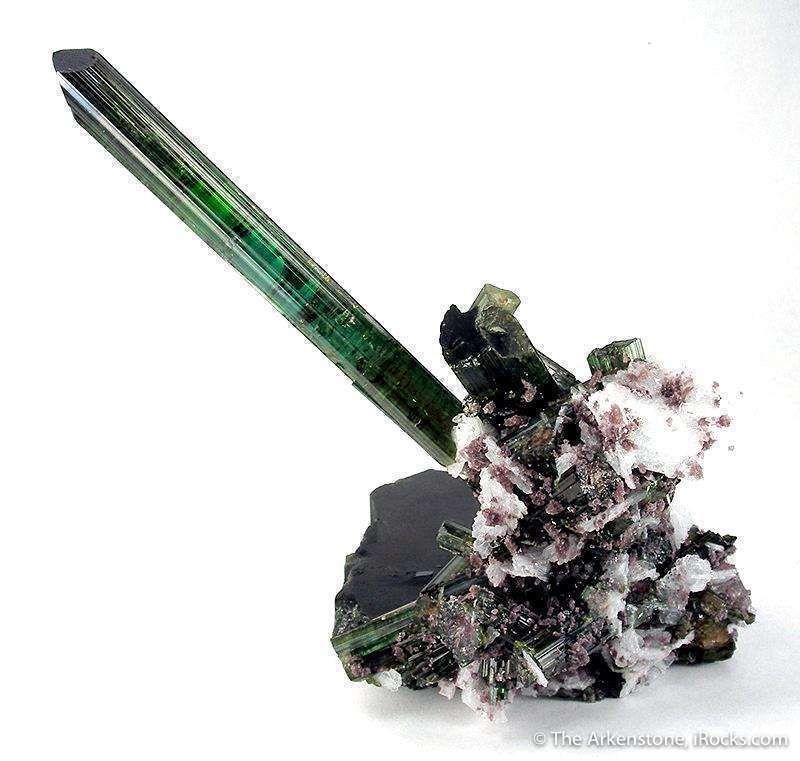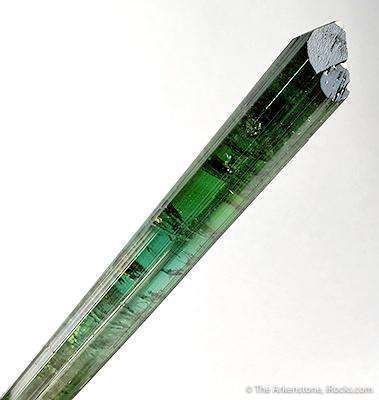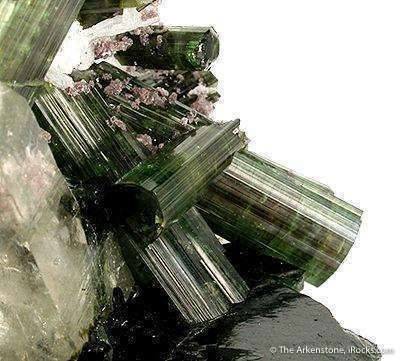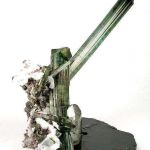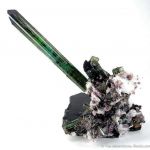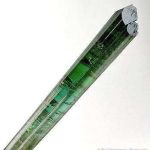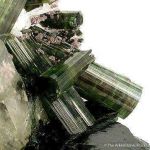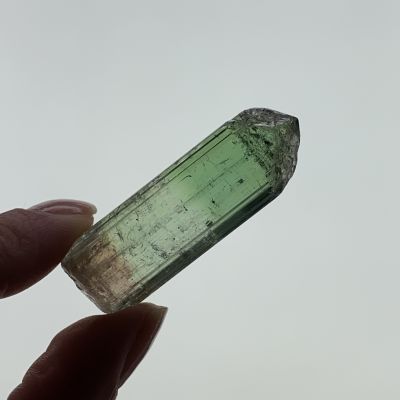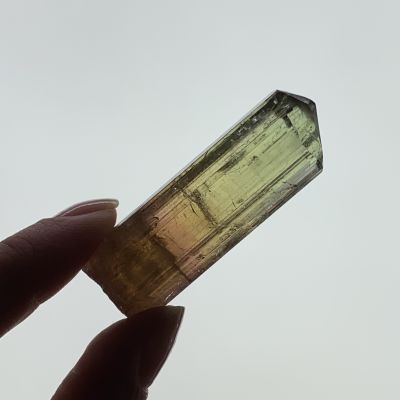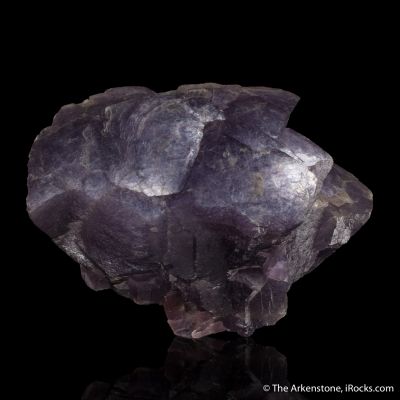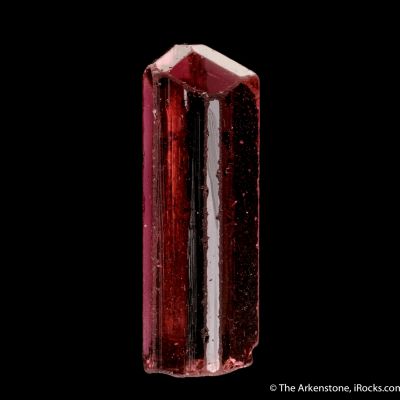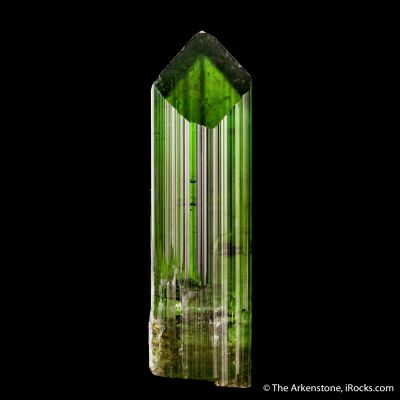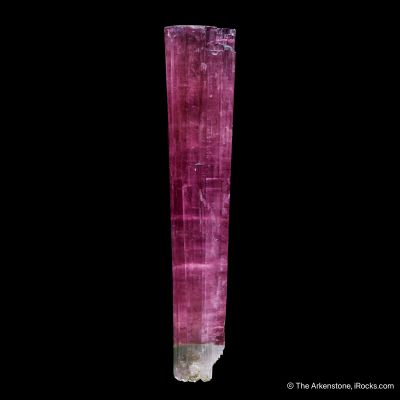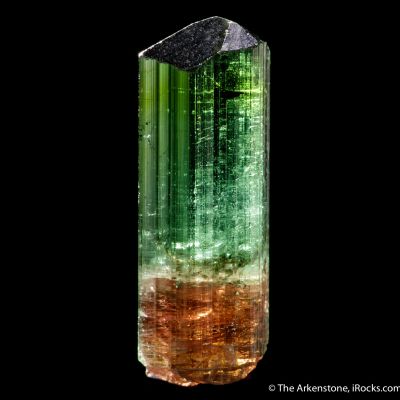- VLT-8
- Elbaite Tourmaline with Quartz, Cleavelandite & Lepidolite on Tourmaline
- Pederneira Mine, Minas Gerais, Brazil (2001)
- Large Cabinet, 24.0 x 14.0 x 11.0 cm (9 inches tall)
- SOLD
This is, for my taste, a truly unique piece out of all the hundreds I have seen from this mine. It consists of a 17.5 cm-long "sword" of tourmaline shooting out majestically from a "tree" of thick crystals, with lepidolite and albite mixed in for contrast. In person, the shockign stark white blades of Cleavelandite and the sparkly purple lepidolite stand out a lot more, and really contrast with the gemmy green tourmaline. It is hard to photograph and get all colors to come out, without making the lepidolite pale or the Cleavelandite a glaring white color. It, like the piece below, is a specimen that I cherry-picked when I had a unique exchange opportunity with the person who brought out this find a few years ago. I love this piece so much for its aesthetics, that it only ever went to two small shows. I keep it here to look at. The cluster, the whole tree-and-sword combination, is itself growing and rising out of a 13 x 9 cm TERMINATED TOURMALINE CRYSTAL THAT SERVES as the natural base for the piece. It look slike nothing so much as a tree rising from a lake...the green tourmaline base even has what looks like ripples on the water surface. You look at this and your first thought will be, surely this is glued on there and carved this way. Believe me, I was also floored when I saw it, not at first registering that it wasn't glued to a tourmaline slab but that the whole complex cluster grew upon what must probably have been a massive tourmaline crystal. What are the odds this would grow on the crystal's termination, and not along an ugly and exposed side?! And what are the odds, that this termination could be preserved in mining the cluster atop!? I find it higly unlikely, and that is part of why I value the piece so highly. Pieces of this complexity can be preserved as they do occur, rarely; but the problem is, they are fragile. This "Rocket Pocket" as some call it was found in pieces (in 2001 if I recall), and put back together over several years like a jigsaw puzzle. All large specimens have repairs, most more than a dozen. I do not accept so many repairs, except in special cases: where the overall aesthetic impact is significant enough that the piece warrants it; where the price is adjusted accordingly; and when the overall context of the FIND ITSELF requires repairs to obtain an important display-quality specimen (as in this case). This one has only 3 very clean repairs (one with very minor gap-fill epoxy) and a fourth repair on the stalk of the trunk which has a small bit of color-matched epoxy gap-fill. The other three repairs are to the elongated 7.5-inch crystal and are only barely visible to my eyes in the right skewed lighting...they are NOT generally visible and do not detract visually. Miraculously, this whole cluster was held together by the central quartz crystal, which is itself fully terminated and pristine, and extends DOWN THROUGH the tourmaline cap that is a base for the cluster. If not for that central sturdiness, I am sure the specimen would have broken into many pieces and come apart from the underlaying tourmaline cap, as well. Comes with custom engraved lucite base, for easy display.
